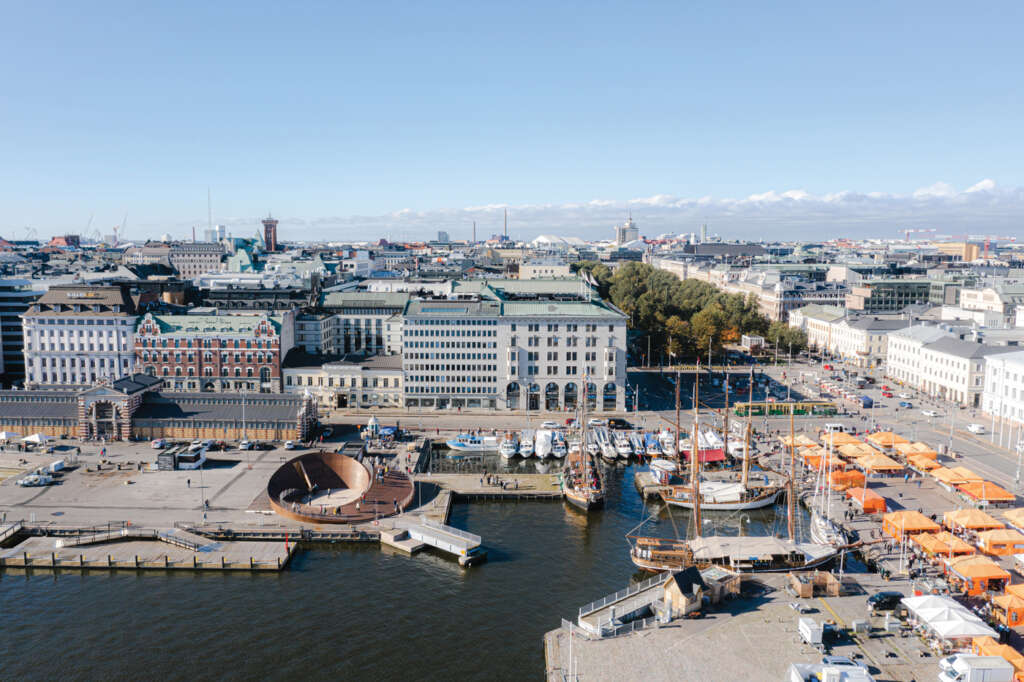
Helsinki Biennial Pavilion
Architect: Verstas Architects
Location: Helsinki, Finland
Type: Pavilion
Year: 2021
Photographs: Tuomas Uusheimo, Pyry Kantonen
The following description is courtesy of the architects. The Helsinki Biennial Pavilion, located at the South Harbour of Helsinki, serves as the entry point to the Helsinki Biennial art festival that is held on the nearby Vallisaari island. The ferry to Vallisaari departs from a pier adjoining the pavilion. Accessible all year round, the pavilion provides a public open-air urban living room space where one can pause and enjoy the presence of the sea in the heart of the city. The Biennial Pavilion houses ticket sales and tourist information as well as ancillary spaces in a simple rectangular volume next to the pavilion. It provides a place for people to meet and to wait for the ferry. The pavilion is made of wood, a material traditionally used for buildings and boats in the archipelago. Over time, the wood will acquire a patina. As a local material, it will sustain the seasonal changes in the harsh northern climate.
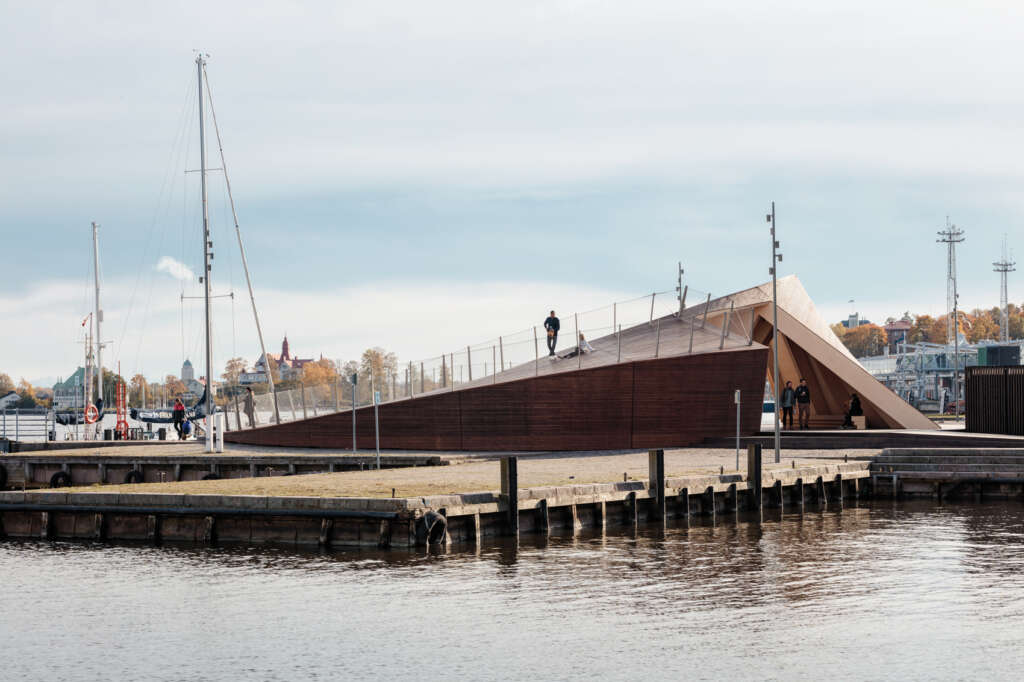
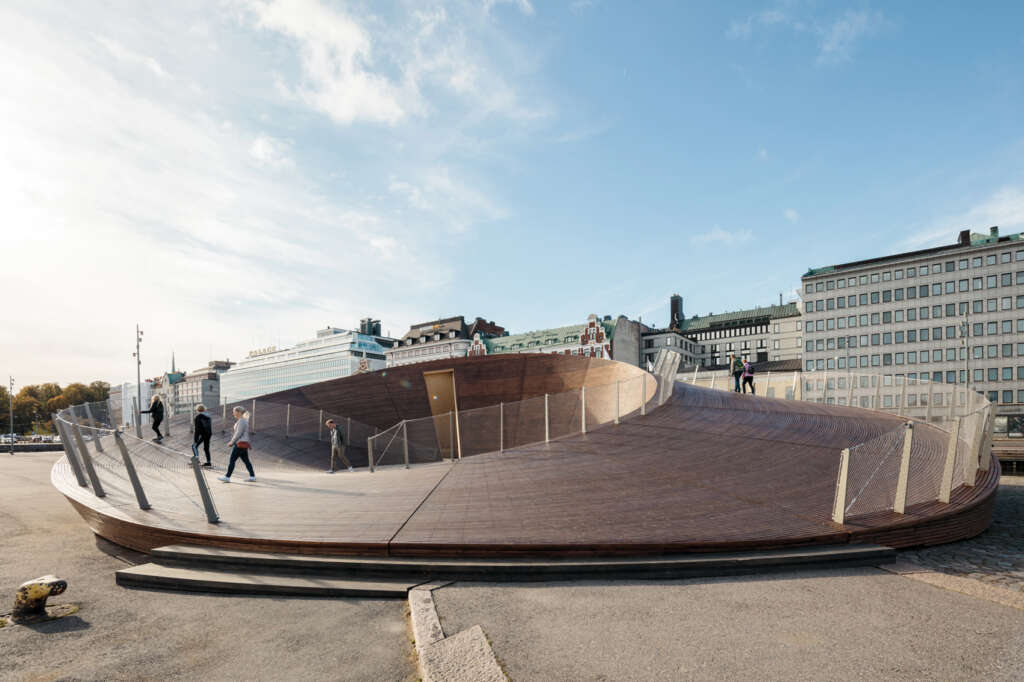
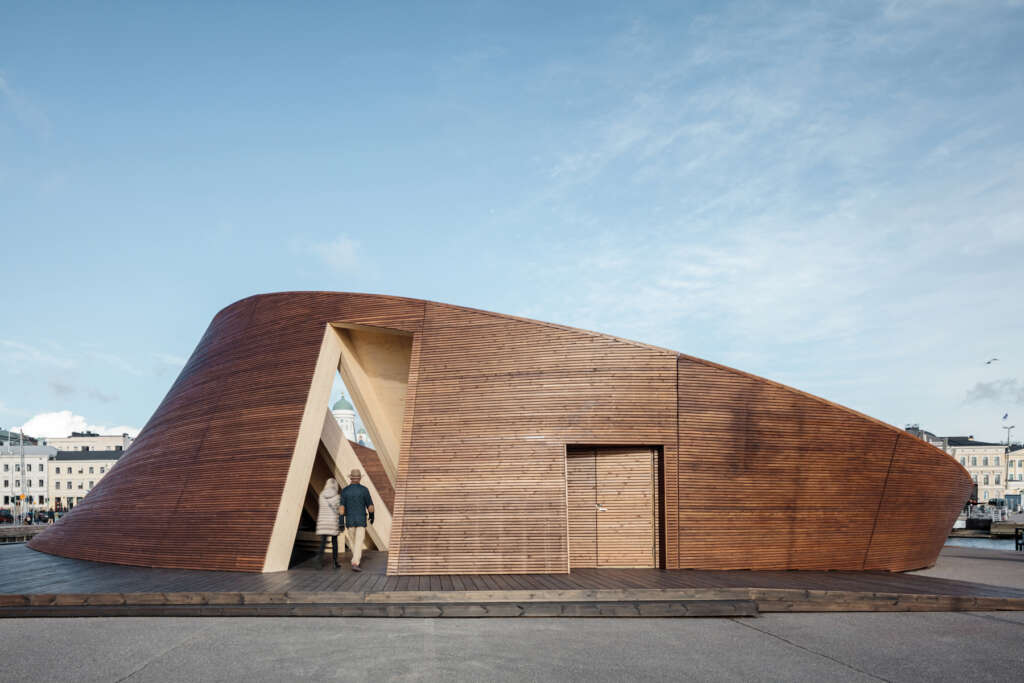
The shape of the pavilion was inspired by the rocks and ponds of Vallisaari island. The fabrication process of the pavilion was guided by a digital 3D building model. Built in a carpenter’s workshop in a small harbor town, the prefabricated modules for the pavilion were shipped by sea and loaded directly onto the site for installation. The modules consist of glue-laminated timber frames and steel ties, clad with laminated veneer lumber and topped with fine sawn pine battens stained dark with a mix of tar and linseed oil.
The wooden surfaces of the interiors are treated with wood oil to maintain their natural light color. Lighting is hidden in slots between the triangular parts of the frame. The deck is made of oiled pine planks, while the round yard in the middle is paved with greyed crosscut logs and white quartz sand. As a locally available material with a capacity to store carbon, wood is ecologically sustainable and long-lasting in the northern climate. It is easy to maintain and quick to repair by replacing worn-out parts. The Helsinki Biennial on Vallisaari island is part of the city’s strategy to make the archipelago more accessible.
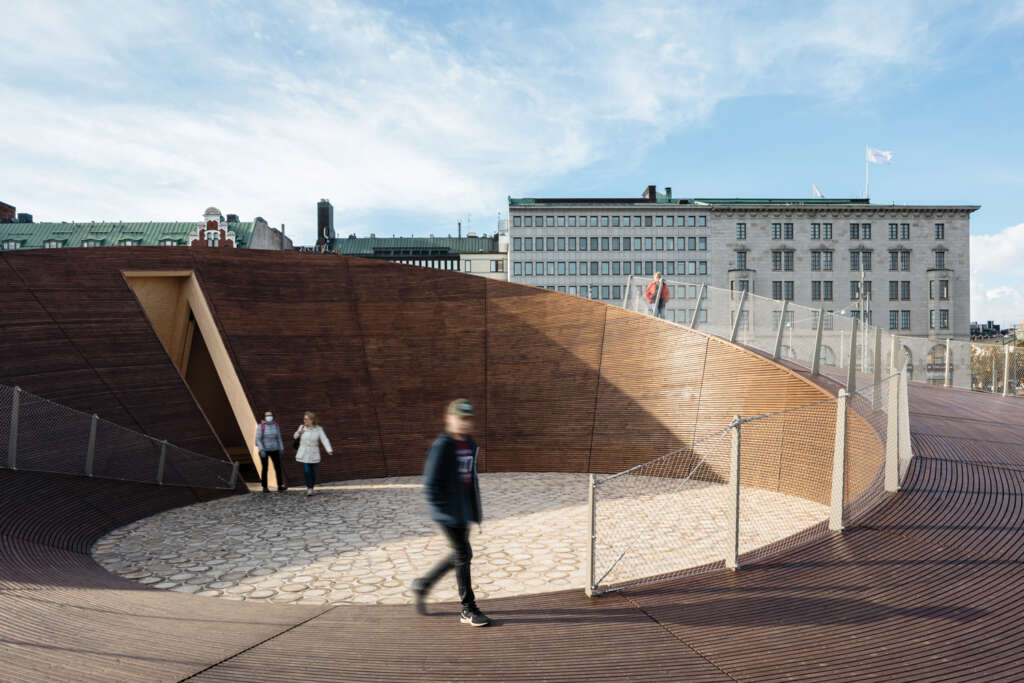

View through the pavilion. Photo by Tuomas Uusheimo 
The interior waiting space. Photo by Pyry Kantonen 
Clay study models
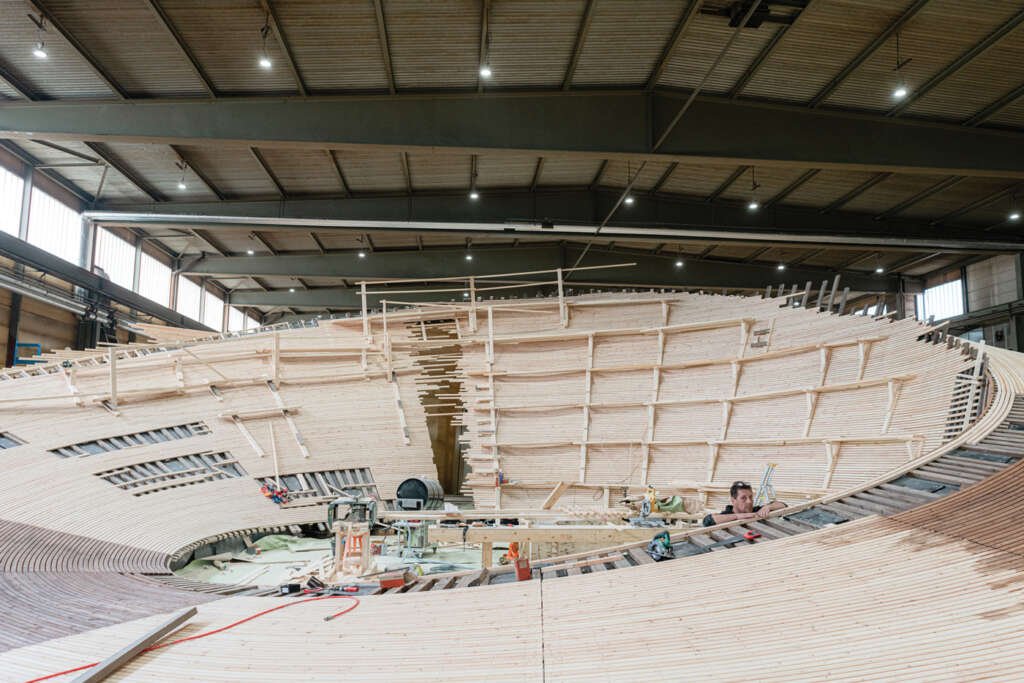
The pavilion was designed to provide an anchor point for the event in the city. As a wooden “vessel” it enters a dialogue with the ships in the harbor and ties in with the history of the Market Square. At first, the intention was to have the pavilion dismantled after each Biennial and to have it shipped in pieces to Vallisaari to be stored there for the winter.
This prompted the decision to make the pavilion with prefabricated wooden elements that can easily be moved around by ship. However, it was quickly realized that the pavilion has a much bigger role to play if left to stand in place all year round. It provides a place for people to hang out by the sea. One can rest on the sloping auditorium-like space observing the colorful marketplace or seek shelter under the tent-like roof.

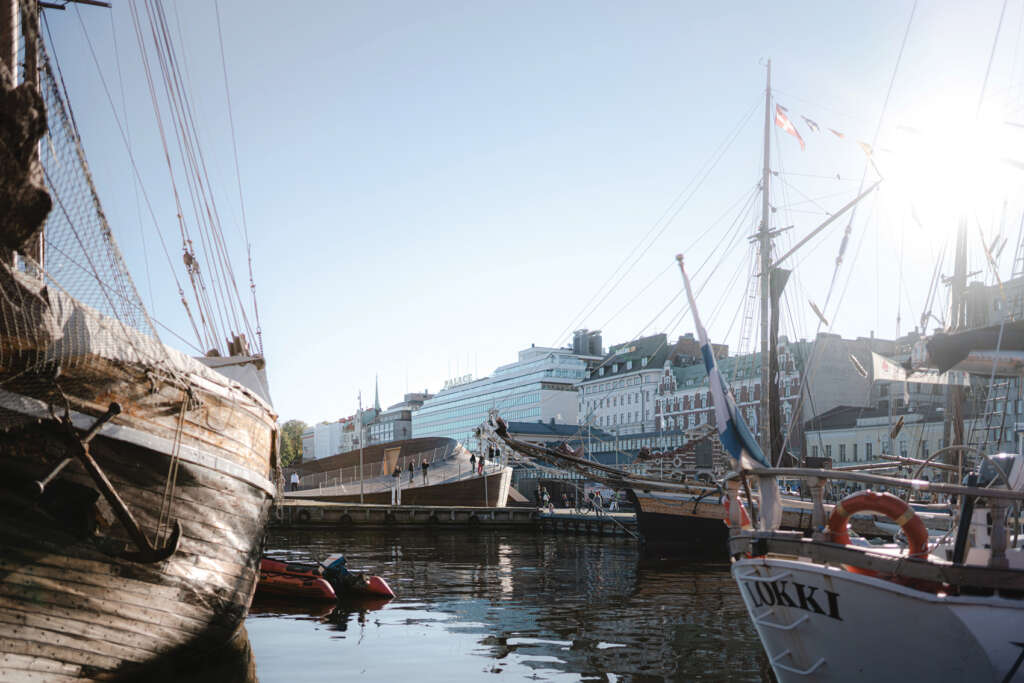
Project Details
- Location: Helsinki, Finland
- Area: 187 m²
- Architects: Verstas Architects
- Verstas Architects Partners: Väinö Nikkilä, Jussi Palva, Riina Palva, Ilkka Salminen
- Leading Architect: Jussi Palva
- Project Architect: Mikko Rossi
- Team: Otto Autio, Pyry Kantonen
- Structural Engineer: Expecon Oy
- Geotechnical Engineer: City of Helsinki / Urban Environment Division
- Traffic Engineer: City of Helsinki / Urban Environment Division
- Contractor: Helsinki City Construction Services Stara
- Interior Architect: Ulpu Kojo
- HVAC Engineer: Stacon Oy, Stacon Oy
- Fire Protection Engineer: Paloässät Oy, Paloässät Oy
- Photographs: Tuomas Uusheimo, Pyry Kantonen







